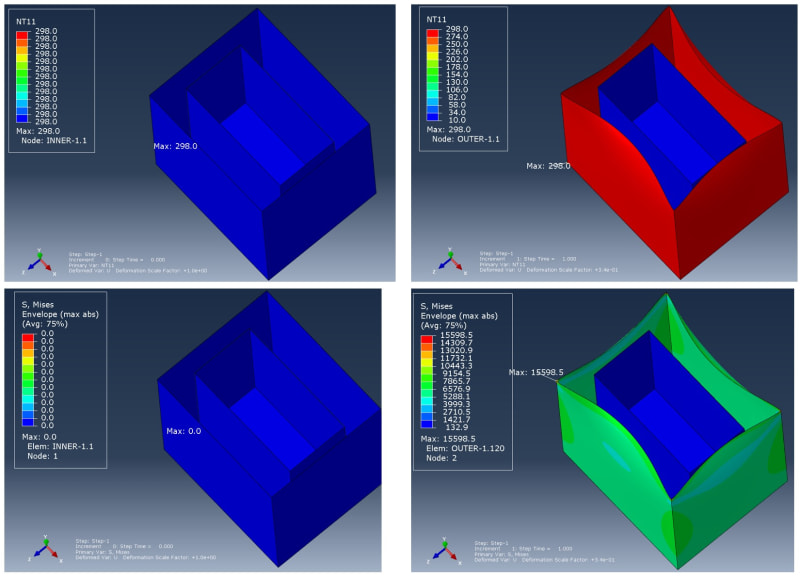GandalFEM
Mechanical
- May 24, 2023
- 6
Hi, I am getting a weird result where the part that has no temperature change is shrinking (drop in temperature).
The result from thermal analysis was spot on, but when the result was applied (ODB file to predefined field) to the static analysis the expansion of my part simply doesn't make sense at all.
However, when the temperature (NT11) result looked alright in the static analysis result. So I am confused even more.
I am using steady-state in the step for both thermal and stress analysis.
Did this happen to anyone? Please help..
The result from thermal analysis was spot on, but when the result was applied (ODB file to predefined field) to the static analysis the expansion of my part simply doesn't make sense at all.
However, when the temperature (NT11) result looked alright in the static analysis result. So I am confused even more.
I am using steady-state in the step for both thermal and stress analysis.
Did this happen to anyone? Please help..

